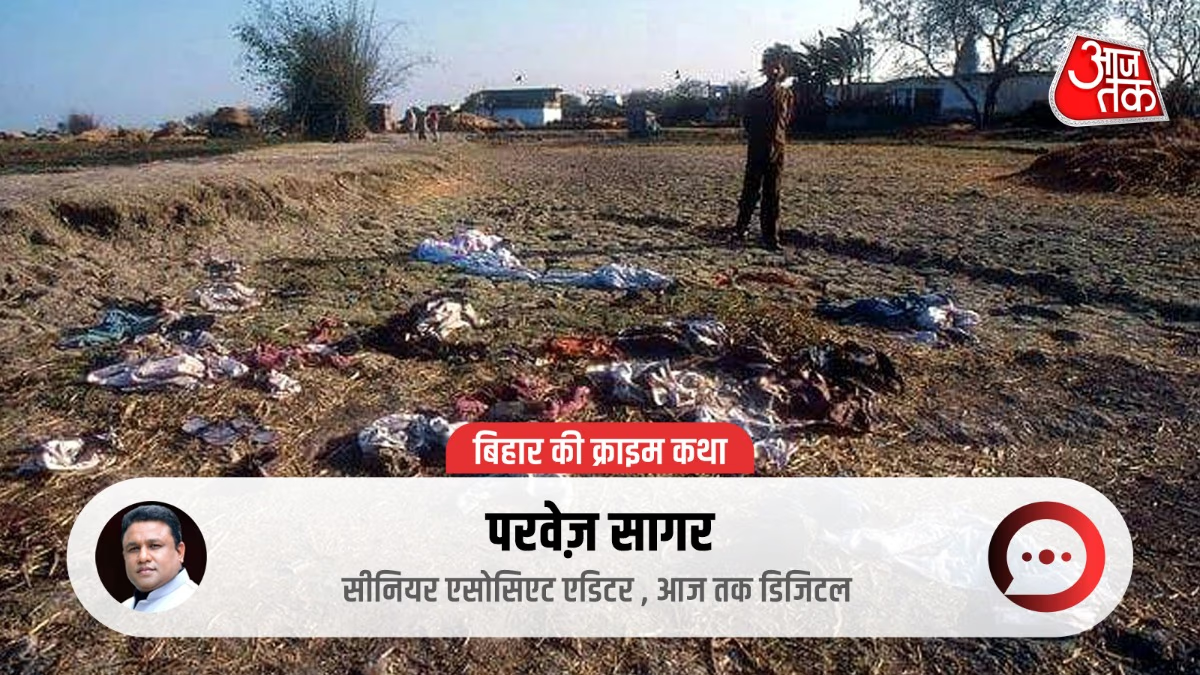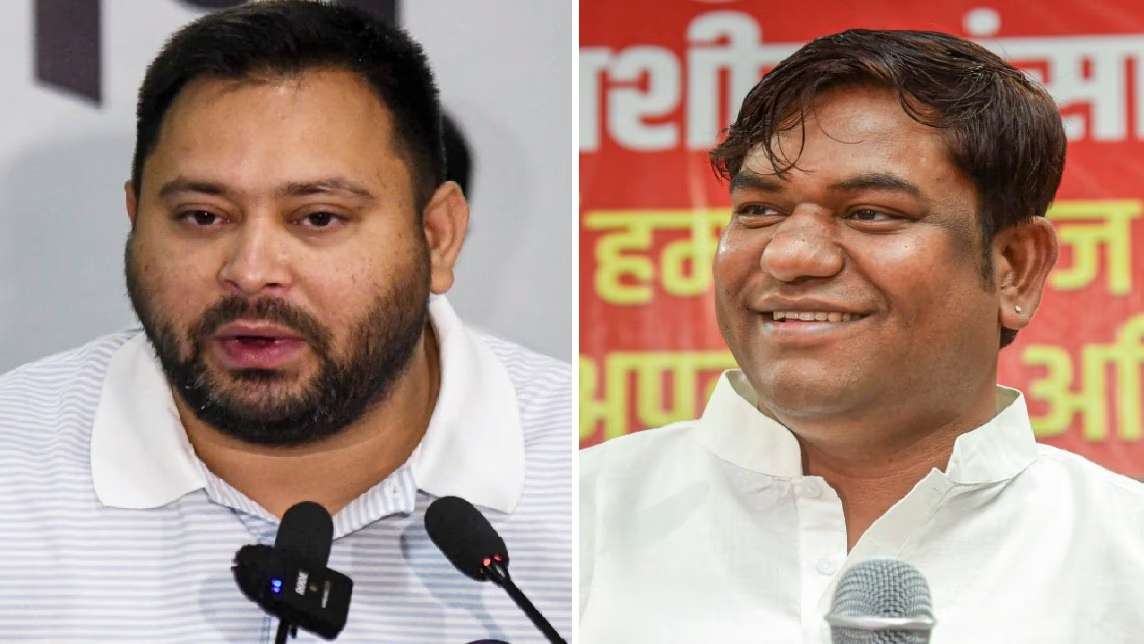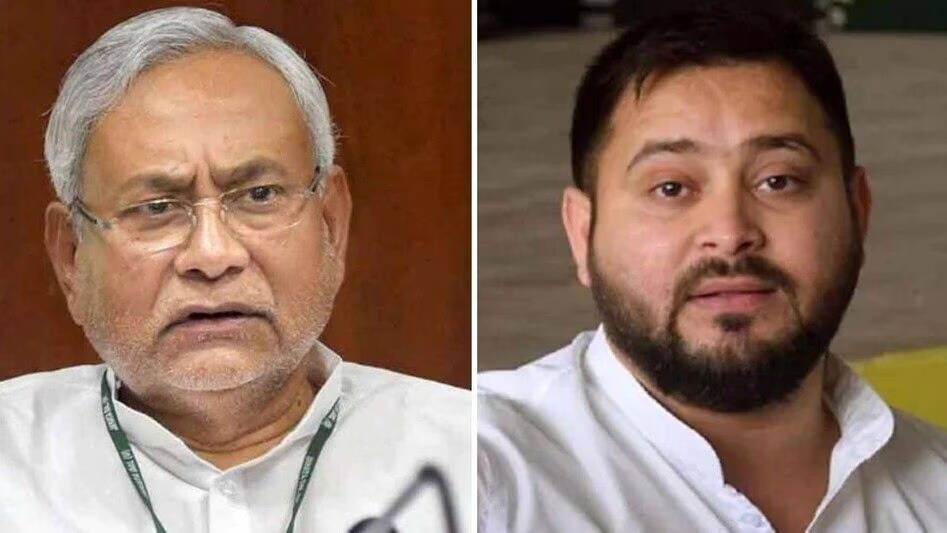Crime Chronicles Bihar Special:
The Bihar Assembly elections are announced and political forces prepare for a showdown. Once, Bihar was a land overshadowed by terror. In light of these elections, we uncover Bihar's grim crime stories, chilling tales that echo through time. Presenting to you under the 'Bihar Crime Chronicles' is the account of collective massacres that shook the state for more than two decades.
The late 70s were the years when Bihar transformed into an unspoken battlefield. Blood mingled with the soil, and the air thickened with the scent of vengeance. On one hand, the Maoist Communist Center (MCC), with their weapons raised, embodied the voices of the oppressed, the landless, and the Dalits. On the other hand, the landlords of high caste, who dominated both the land and power for generations, saw the Maoist rebellion as a direct assault on their reign. This era in Bihar invoked memories of massacres at mere mentions of certain areas.
Bara, Bathani Tola, Laxmanpur Bathe, Senari, Miapur... each incident echoed the last, in a vicious dance of revenge. Justice was sought away from courtrooms, in gunshots that stained Bihar's soil red.
1977 - Sparks Ignite at Belchi
The political climate was dominated by Indira Gandhi when a small village named Belchi, merely 60 kilometers from Bihar's capital, Patna, witnessed calamity on 17 May 1977. In the dead of night, while villagers were deeply asleep, armed intruders besieged the village. These assailants targeted specific households, dragging people out amidst screams of horror. There was no time to comprehend this terror. 11 Dalit laborers were burned alive, their screams piercing through the night's silence, as the cries of women and children resonated heart-wrenchingly.
As morning broke, what remained were half-burnt corpses, testaments to an unspeakable terror. The massacre captured national attention, stirring even the political corridors. Indira Gandhi herself visited the scene, comforting the grieving women. It was a deadly dispute between Kurmi landlords and Dalit farmers, evolving into a caste hatred. Thus began Bihar's tale of caste versus caste.
1987 - Naxalite Reprisal in Dalerchak-Baghaura
On the night of 10 June 1987, chaos reigned in Bihar's Gaya district. A tense silence enveloped Baghaura village before a swarm of Maoist Communist Center (MCC) guerillas descended upon it. Their target: the Rajput community. The scene turned into a macabre vision as people were dragged from homes to fields, where they were mercilessly killed. Their ruthless attack left the ground soaked in blood.
By dawn, 42 bodies lay scattered, a statement shouted amidst dead silence: 'Oppression would now meet weaponry.' Elder villagers despaired, 'We saw a pool of blood, even fear is now silent.' This massacre blazed a terror-stricken path for the coming decades, a path of vengeance.
1994 - The Rise of Ranveer Sena
As time progressed, the shade of Maoism darkened in Bihar. By the mid-90s, villages donned the red flag. Naxalite groups prospered among the oppressed, impacting the youth. Feeling threatened, Bhumihar and Rajput landlords formed a private army, the Ranveer Sena, named after their folk deity, Ranveer Baba.
The goal was to retaliate against Naxalites. Intended for protection, the Ranveer Sena soon became synonymous with terror, declaring across lands and villages, 'Whoever opposes us, shall be eradicated.'
1992 - Bara Massacre, MCC's Assault on Upper Castes
Even after the Ranveer Sena's rise, the Maoists grew aggressive, retaliating in Gaya on 12-13 February 1992. At 10 PM, MCC men surrounded Bara village, entering silently, dragging residents into the open. Neither men, women, nor children were spared as those resisting were brutally killed.
With sharp weapons, the intruders slaughtered 35 to 40 Bhumihars mercilessly, leaving behind only echoes of mourning. MCC proclaimed, 'This is justice, not revenge. Those who till the earth shall rule.' In truth, it was vengeance's inception.
1996 - Bathani Tola in the Flames of Retribution
Four years after MCC's massacre, the Ranveer Sena exacted severe revenge on Bathani Tola village in Bhojpur. As night fell on 11 July 1996, around 200 armed men infiltrated the village with fury and vengeance masked under their faces.
Ranveer Sena's attackers spared none in Bathani Tola; they dragged people from homes, shooting them mercilessly, with bullets echoing continuously. Within moments, 21 lifeless bodies lay strewn. A woman and her newborn were among those tragically burned. This attack targeted Dalits, Muslims, and laborers indiscriminately, clearly pointing to past vendettas.
1997 - Mass Murder in Laxmanpur Bathe
Arwal, then part of Jehanabad district, saw deepening enmity between Ranveer Sena and the MCC. On the moonlit night of 1 December 1997, Ranveer Sena's armed contingent descended into the village, executing a deadly, vicious spree without sparing pregnant women, children, or the elderly.
Within hours, 58 innocent Dalits were slaughtered brutally, as fields soaked in blood, houses burned, and silence of death prevailed at dawn. It was so severe, it was termed a 'national shame,' meant to instill fear against MCC supporters, though turning Ranveer Sena into ruthless executioners.
1999 - Shankar Bigha: The Familiar Tale
In Jehanabad, during the cold night of 25 January 1999, people were nestled in beds as gunfire shuddered the village awake. The shooters, again, were Ranveer Sena, aiming their bloodied arsenal at Shankar Bigha village.
The attackers showed no mercy—elders, children, none were spared. Post the slaughter, which claimed 22 Dalit lives, a villager lamented, 'They fired bullets not by name, but by caste.' It reverberated through Bihar's soul, but the cycle of vengeance was unbroken.
1999 - MCC's Revenge in Senari
Still reeling from Shankar Bigha's wounds, MCC sought vengeance. On 18 March 1999, MCC launched a savage dawn attack in Senari village, ruthlessly segregating and butchering 40 individuals, divisively organized, executed in front of loved ones, 34 slain instantly.
Survivors described the scene as a battlefield devoid of humanity, MCC marauders declaring, 'This is for Shankar Bigha.' As blood filled the soil once more, none were spared, tilling revenge itself into history's annals.
2000 - The Finale at Miapur?
The cold war between MCC and Ranveer Sena spanned 23 years, still ravaging. On 16 June 2000, in Aurangabad's Miapur, another attack focused on MCC's presumed supporters - Yadavs and Dalits.
In a tactic grown familiar, Ranveer Sena, breaking into the village, systematically tore residents from homes, punishing resistance, total death count: 35 souls. Silence and mourning followed, while law and order lagged behind, Sena justifying Miapur's horror as retribution for Senari.
The End of a Bloody Era
Ultimately, this era of bloodshed began to wane due to Bihar's political transformation under Nitish Kumar's rule, weakening both MCC and Ranveer Sena. If change also meant grassroots peace, Bihar forged onwards. Post-2000, Bihar witnessed much change; Naxalism waned, Ranveer Sena banned. Yet the stain remains, villages reminding scars of pasts lost in tragedies and lives unjustly stolen. Court verdicts cleaved some accused free on lack of evidence; many exploited politically, others faded into obscurity. But locals, etched into the land, claim, 'Though we strive to forgive, the earth itself reminds us where blooders spilt.'




